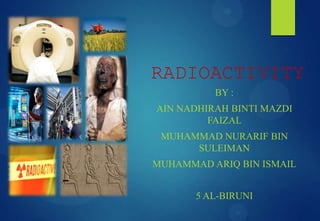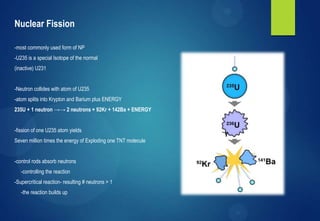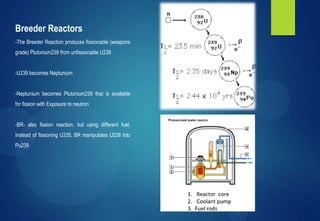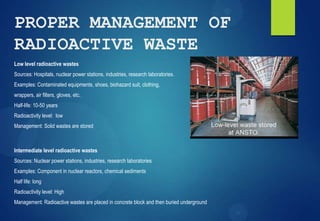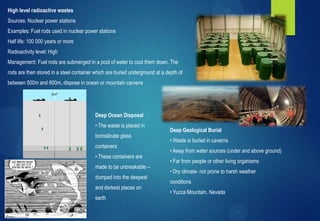This document summarizes information about radioactivity and its applications. It begins with a brief history of the discovery of radioactivity by Becquerel in 1896 and the Curies. It then discusses the stability of nuclei and properties of radioisotopes. Applications of radioisotopes discussed include uses in medicine such as diagnosing thyroid disease, treating overactive thyroids, and detecting blood clots. Additional applications include using radioisotopes to date artifacts, study geological time periods, ensure thickness of materials, and kill pests. The document also covers nuclear fission, pros and cons of nuclear energy, negative effects of radiation, and proper management of radioactive waste.
